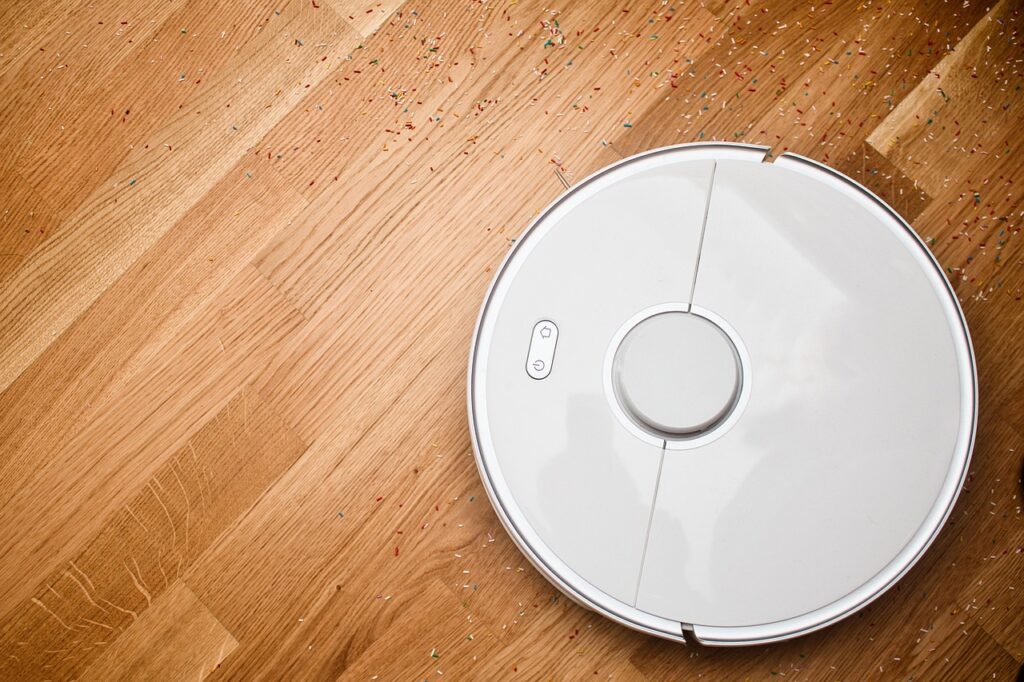Robot Vacuums: UK’s Hands-Free Heroes
In 2025, robot vacuums zip through 2.1 million UK homes, sucking up crumbs and pet hair while owners sip tea (Statista, 2025). From £100 budget bots to £800 AI marvels, they’ve cut vacuuming chore times down. But how did these disc-shaped cleaners go from clunky prototypes to kitchen staples? Let’s trace their journey, from 1990s dreams to today’s controversies.
1990s: The First Stumbles
Robot vacuums sparked in 1996 when Electrolux debuted the Trilobite in Sweden—a £1,500 brick that bumped walls and missed corners. Tested on BBC’s Tomorrow’s World, it sold 1,000 units by 2001 but flopped due to price and glitchy sensors (Which?, 2002). UK homes stuck to upright Hoovers; robots felt like sci-fi toys.
2002: Roomba’s Big Break
The game changed in 2002 when iRobot launched the Roomba in the US, hitting UK shelves by 2003 for £200. With basic sensors and a spinning brush, it cleaned 100 square feet in 30 minutes, dodging stairs but tangling in cords. By 2005, 2 million sold globally (iRobot), and UK sales hit 50,000 (Mintel). X posts from 2004 called it “a lazy lad’s dream” (@TechBit, 2004). Roomba’s edge? Affordable chaos navigation—random zigzags that worked.
2010-2015: Smarts and Stumbles
By 2010, brands like Dyson (360 Eye, £800) and Samsung entered, adding cameras and mapping. Sales climbed to 200,000 UK units by 2015 (Euromonitor). Wi-Fi hit in 2013—Neato’s Botvac (£400) let you schedule cleans via apps. But issues persisted: early Roombas got stuck under sofas, and 20% of owners reported breakdowns within two years (Which?, 2014). Still, #RobotVacuum clips on TikTok (10 million views, 2015) showed cats riding Roombas, boosting buzz.
2016-2020: Lasers and Mops
Laser navigation (LiDAR) arrived in 2016 with Xiaomi’s Mi Robot (£250), plotting precise paths. By 2018, 500,000 UK homes had bots (Kantar). Hybrids like Ecovacs Deebot (£300) added mopping, scrubbing tea stains off tiles. Self-emptying docks (Roomba i7+, £600, 2019) cut dustbin trips—30 days’ dirt in one bag. Sales soared 300% during 2020 lockdowns as Brits tackled pet fur (Statista). Like earbuds ditching jacks, vacuums went cordless and clever.
2021-2025: AI and Controversies
Today’s robots are brainy—Roborock’s Qrevo Edge (£900, 2025) uses AI to dodge socks and map multi-floor flats (Vacuum Wars, 2025). Suction hit 18,500Pa (vs. 1,000Pa in 2002), and 70% of UK models mop (Mintel). Budget picks like Eufy’s RoboVac (£150) clean rugs as well as pricier Sharks. TikTok’s #CleanTok (2 billion views) shares hacks—empty docks monthly, skip shag carpets.
But controversies cloud the shine. Privacy fears hit in 2022 when Eufy’s “local storage” cams sent unencrypted data to clouds, sparking 200k X posts (#EufyLeak) and EU fines of €1 million (GDPR breach). Roomba’s j7+ cameras (for obstacle avoidance) raised hack risks—10% of users worried about home maps leaking (YouGov, 2023). Green gripes too: bots’ lithium batteries add 15kg CO2 per unit, and only 30% are recycled (Greenpeace, 2025). X petitions for eco-designs gained 50k likes in 2024.
Why UK Loves Robots
Robot vacuums save 5 hours weekly for 60% of owners (Which?, 2025), freeing time for brews or air fryer chips (try our air fryer tips). From Roomba’s 2002 hum to 2025’s silent AI, they’re less chore, more mate. Got a bot tip? Comment below!

